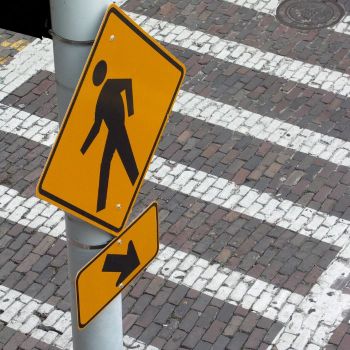4T-Signalization Design
This course provides a history and requirements for use in the design of signalized intersections. The Manual on Uniform Traffic Control Devices (MUTCD) for signal warrants, definitions of traffic signal control types, phasing and signal operating plans are covered. In addition, traffic signal pole layout, vehicle and pedestrian detention, signal timing parameters and signal coordination are be discussed.
Description
This course provides a history and requirements for use in the design of signalized intersections. The Manual on Uniform Traffic Control Devices (MUTCD) for signal warrants, definitions of traffic signal control types, phasing and signal operating plans are covered. In addition, traffic signal pole layout, vehicle and pedestrian detention, signal timing parameters and signal coordination are be discussed.
Course Outline
This course provides background regarding the use of signalization for traffic control. A brief history of the use of signals is provided. The advantages and disadvantages of using signalization as a means of traffic control are also included.
The Manual on Uniform Traffic Control Devices (MUTCD) traffic signal warrants are listed to show that there is a system in place to determine if the installation of a signal is appropriate. Definitions of traffic signal control types are provided including pre-timed, semi-actuated and actuated. Examples of the various signal head types (vehicle displays, signal head auxiliaries and pedestrian displays) are also included with photographs.
There is a discussion of the different types of traffic signal phasing used to control the movements at an intersection. The signal operating plan (SOP) is also discussed in conjunction with these phases. The advantages of traffic signal pole layout (pedestal, span wire assembly and mast arm assembly) are outlined in a table.
Type of vehicle and pedestrian detection are discussed. The controller is also discussed as it is the “brain” of the intersection.
The basic signal timing parameters are defined. Equations are also provided to calculate the pedestrian and vehicle timings. Signal operating terms are also defined. Signal coordination and emergency vehicle preemption are discussed as they affect the traffic signal operation.
| Objetivos de aprendizaje | Objectives
|
|---|---|
| Horas de Contacto | 4 Horas |
| Cursos CIAPR | CURSO TECHNICO |
| Instructor | Debra Kennaugh, P.E. |
| Dispositivos | Desktop, Tablet, Mobile |
| Idioma | English |


















Validate your login
Registrarse
Crear una nueva cuenta